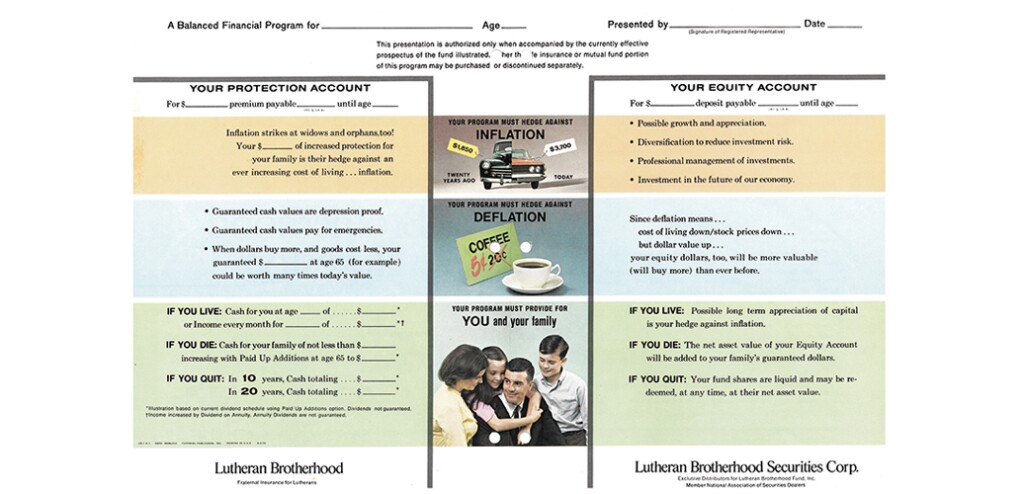When saving for a specific purpose, whether that's to purchase a home, start a business or pursue a longer-term goal like saving for retirement, every dollar counts. So it can be disheartening to learn that some of the savings in your retirement account goes toward fees, such as expense ratios. But what exactly is an expense ratio? It's a fee you pay to cover the operating and administrative expenses of
Here's what you need to know about expense ratios and how they can affect your investments.
What are expense ratios and how do they work?
The expense ratio is typically expressed as a percentage of your investment in the fund. It doesn't include brokerage commissions or other transaction costs you incur when buying or selling securities within the fund.
An expense ratio is different from a management fee. Management fees are charged in addition to the expense ratio of the funds you're invested in.
So which is better: high management fees or high expense ratios? Generally, it's better to pay a higher management fee than a higher expense ratio. This is because management fees are typically more transparent and easier to understand than expense ratios. Furthermore, investment managers generally assess management fees regardless of how well or poorly their funds perform.
Expense ratios, on the other hand, are directly related to a fund's performance. If a fund performs poorly and its asset levels decline, the same amount of expenses would result in a higher expense ratio, as those expenses are assessed against a smaller asset base. Since expenses come directly out of the fund's assets, higher expense ratios mean less money to grow in the future.
How is an expense ratio calculated?
Expense ratios are calculated by dividing a fund's operating expenses by the average value of its assets over a certain period (typically one year). For example, say a fund has operating expenses of $100,000 and average assets of $10 million over a one-year period. You would calculate the expense ratio formula as follows:
$100,000 / $10 million = 0.01 = 1%.
With an expense ratio of 1%, the fund costs $10 for every $1,000 you invest in the fund over the course of a year.
You typically don't have to calculate the expense ratio yourself—it should be noted in the fund documentation. The Securities and Exchange Committee (SEC) requires a fund to publish its expense ratio in its prospectus.
Why expense ratios matter and their impact on your investments
When saving, it's important to keep an eye on the fees you're paying. The lower the expense ratio, the less you're paying in fees. And that means more of your money goes toward growing your savings.
For example, say you have $10,000 saved, and you're typically earning a 7% annual return on your investment. If your expense ratio is 1%, you end up with $32,071 after 20 years. However, if your expense ratio was 0.5%, you'd end up with $35,236 over the same period—$3,165 more. As you can see, even a small difference in expense ratios can have a significant impact on your retirement savings.
Paying attention to expense ratios is critical because, without a regular bill, it can be hard to see how much you're paying. When you buy a mutual fund or ETF, the expense ratio is automatically deducted from your returns.
Passive index funds vs. actively managed funds: Which has lower expense ratios?
It pays to weigh the pros and cons of each type of fund you might invest in, such as
Passive index funds are a type of mutual fund that tracks an index, such as the S&P 500. This means the fund manager doesn't try to beat the market—instead, they invest in securities included in the index. This can be a good option if you want to minimize fees and simply track the market.
When it comes to expense ratios, passive index funds tend to have lower fees than actively managed funds. This is because active management requires more work on the fund manager's part, resulting in higher operating expenses.
Actively managed funds, on the other hand, are run by a fund manager who's trying to beat the market. This can be a riskier investment, as the manager may not be successful. However, actively managed funds may offer higher return potential than passively managed funds.
In 2023, the
average expense ratio for actively managed funds was 0.42%. For passive index funds, the average ratio was 0.11%. So, if minimizing fees is a top priority for you, passive index funds may be worth considering.
How a financial advisor can help with your investment portfolio
When choosing investments for your purchase accounts, look beyond the expense ratio. You also want to consider investment performance,
If all things are equal, choosing the investment with the lower expense ratio may help you save money in fees and grow your nest egg faster.
Remember, you don't have to go it alone when planning for your future. Connect with a







